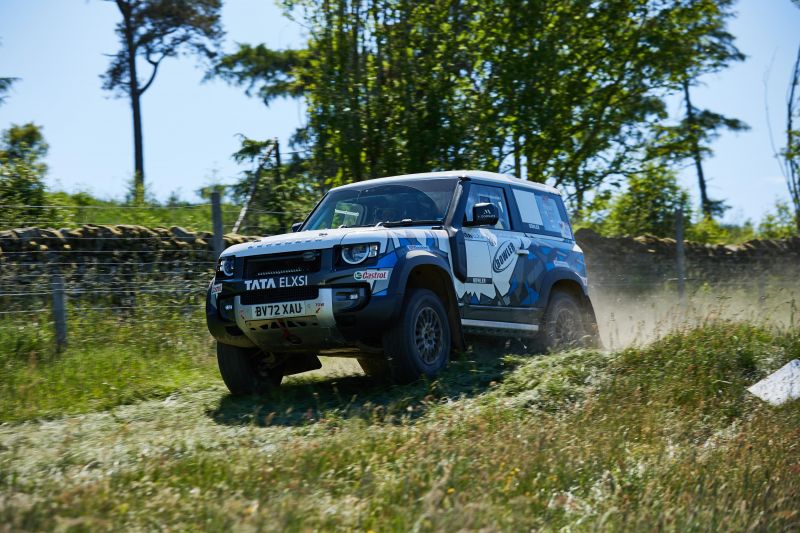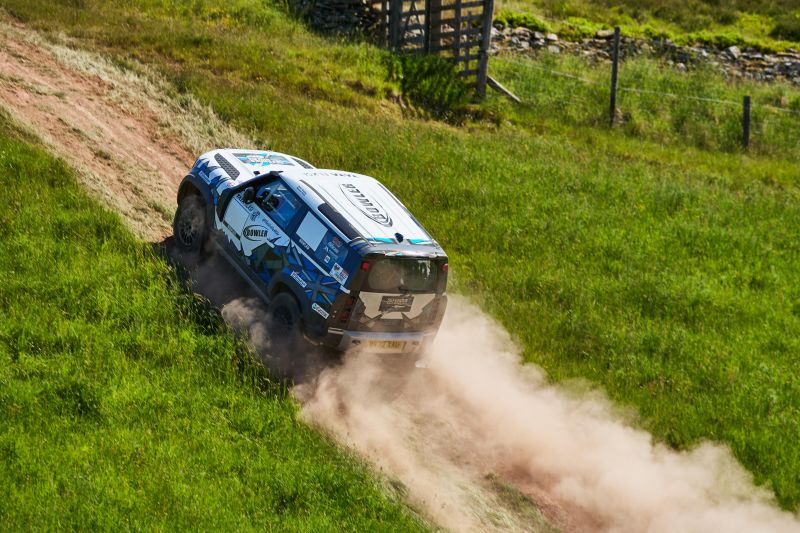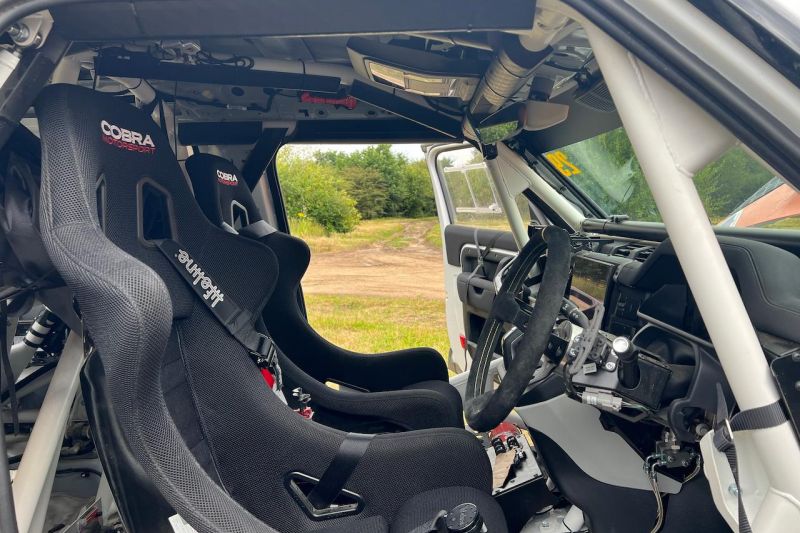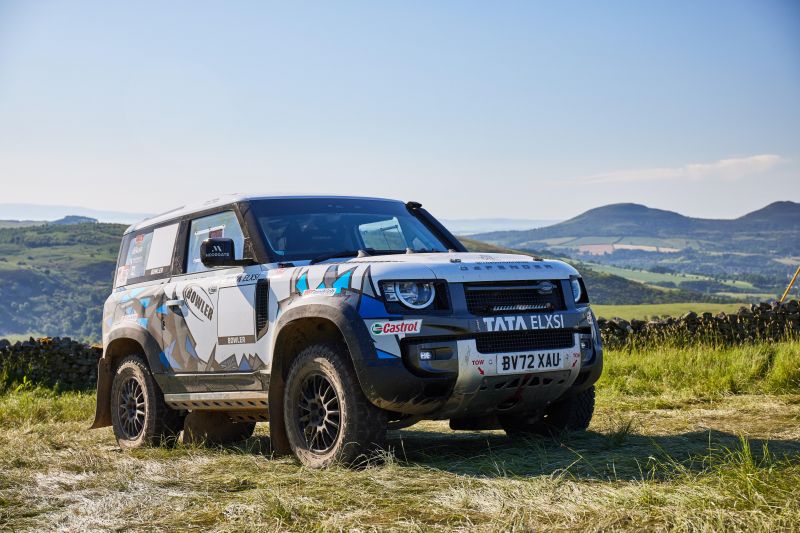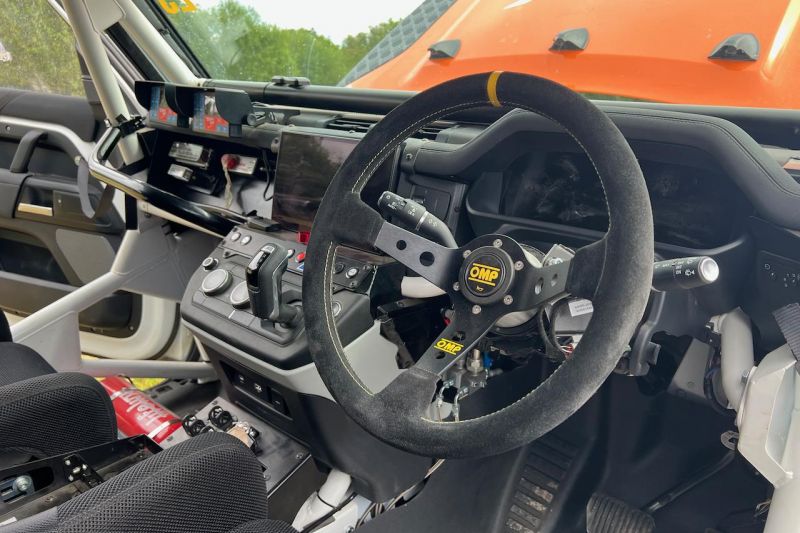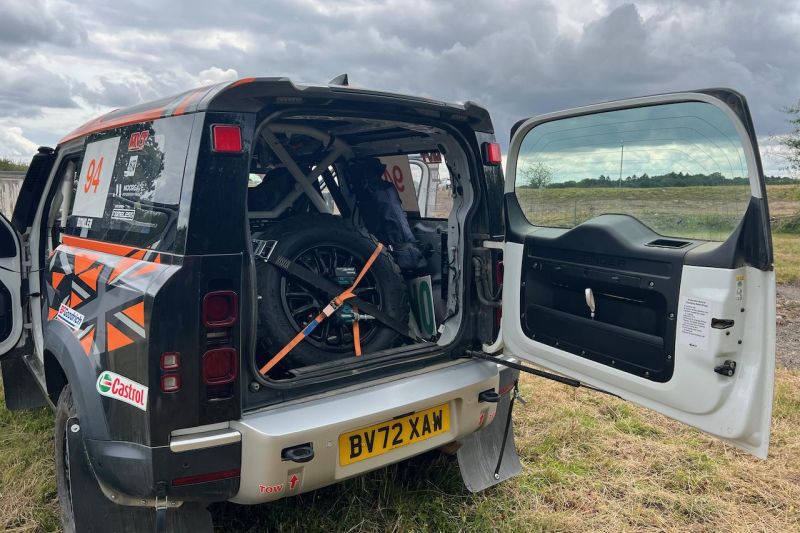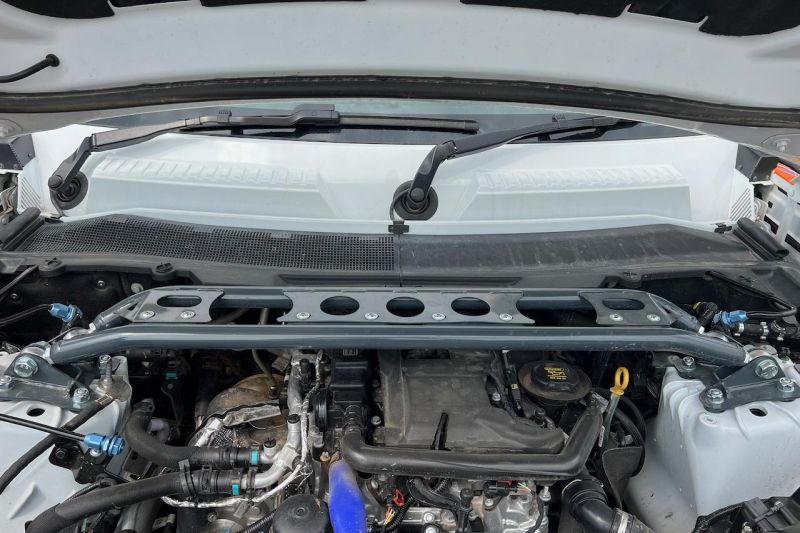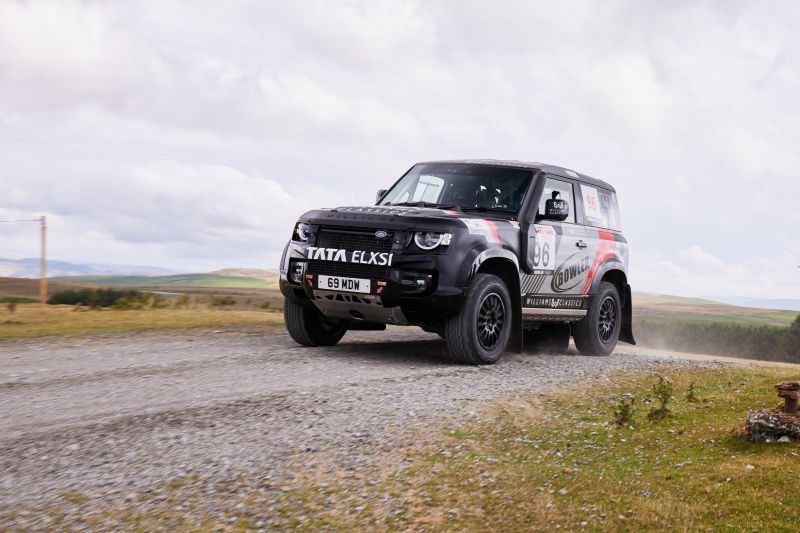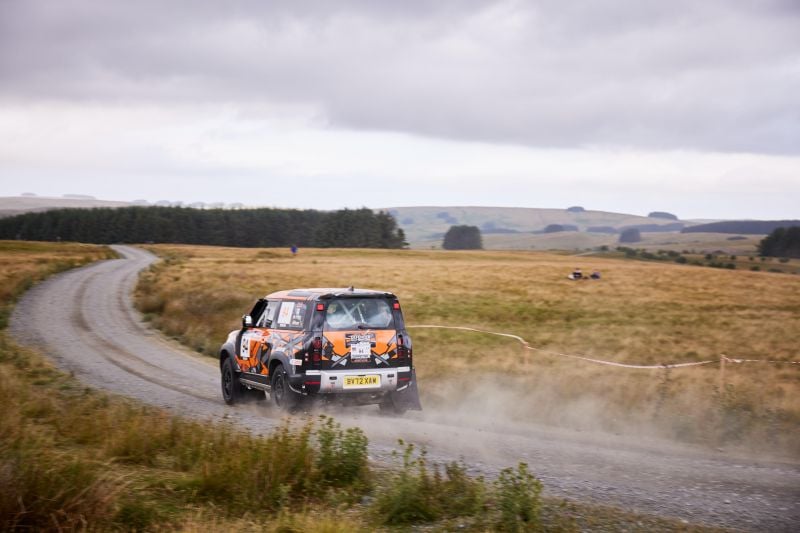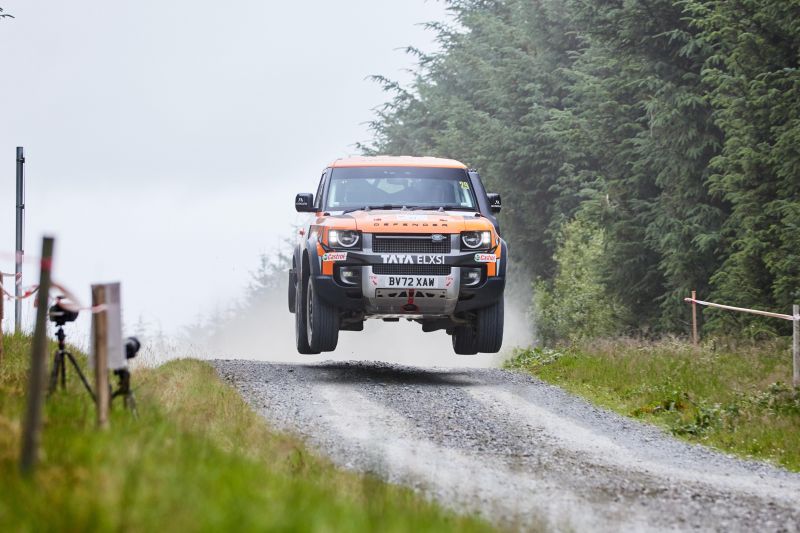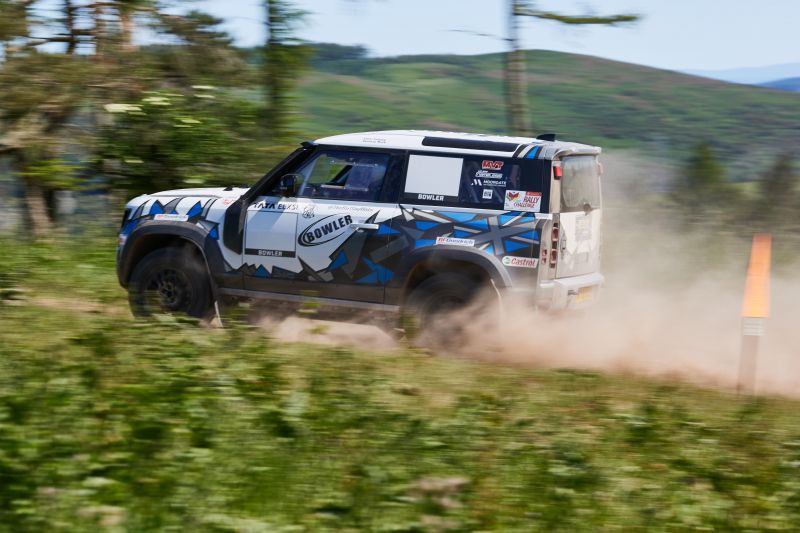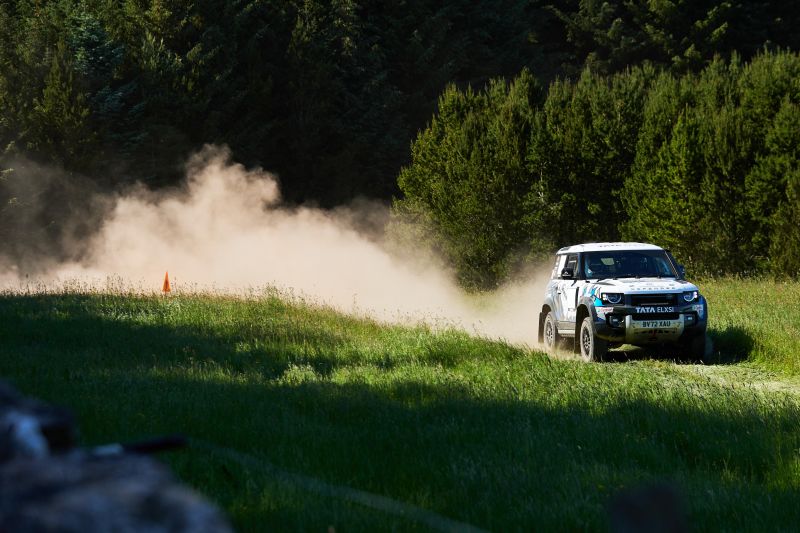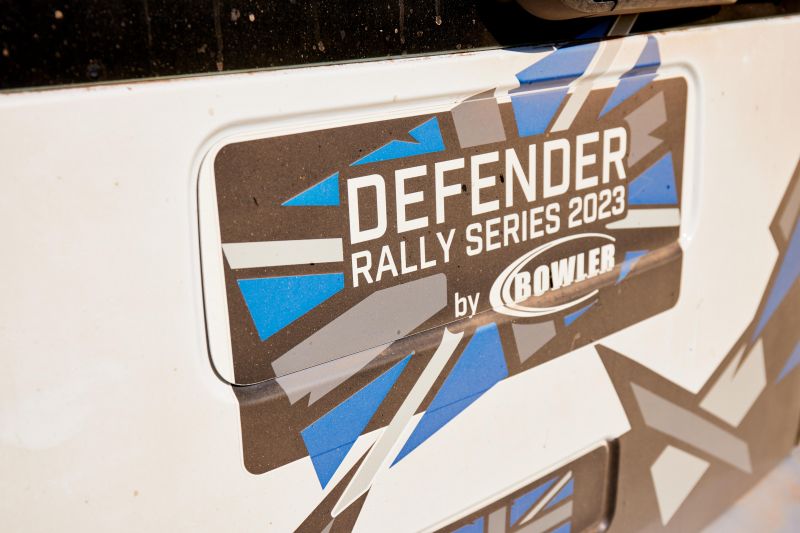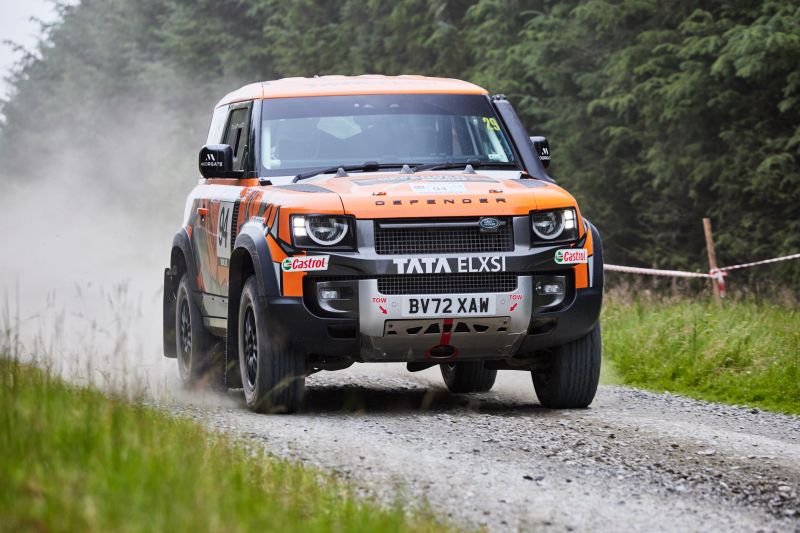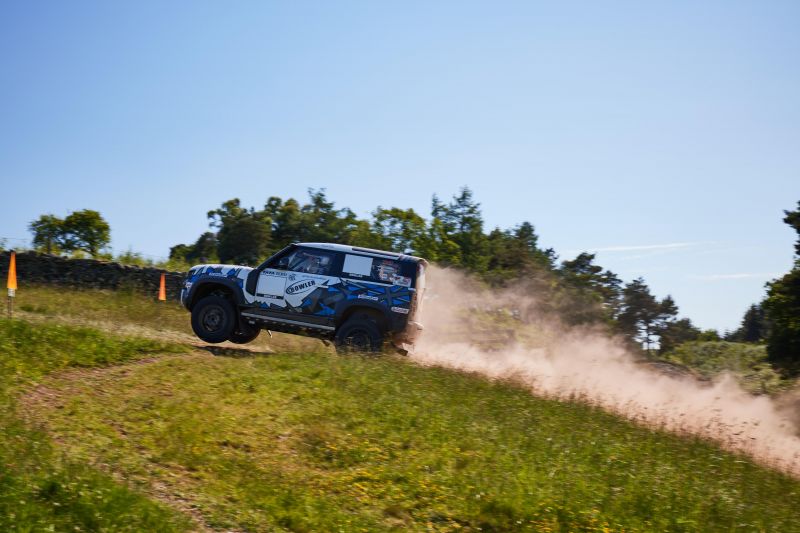There’s nothing stately about a Defender Bowler.
It’s not something King Charles is going to strap himself into for a brief excursion down to the stables at Frogmore House. But that doesn’t mean driving one of these Bowler-built dirt racers shouldn’t be on your bucket list.
My earliest introduction to this madcap off-road outfit was at a Land Rover event at Great Packington in the UK in 2013, where Bowler was displaying a few of its extreme machines, including the hugely powerful Range Rover Sport-based EXR S monster along with a couple of legit Dakar contenders.
Following a good old chinwag with Bowler founder Drew Bowler, I was confident of a steer or at least a passenger ride after watching Tiff Needell have so much fun on the box, but instead, had to settle for a deep river crossing in an amphibious Defender. Oh yes, back then, Land Rover engineers were just as bonkers as the Bowler clan.
Those outside the hardcore off-road fraternity might also be surprised to learn that Bowler has been around for more than a few decades. Initially, modifying Land Rover Defenders for serious off-road competition before becoming a wholly-owned subsidiary of Jaguar Land Rover in 2019.
These days it’s still in the off-road racing business but with a dedicated focus on complete turnkey Defender 90 rally cars for customers itching to compete in the one-make, ‘Land Rover Defender Rally Series’.
The series races throughout the UK and Europe using the latest-generation Defender 90 P300 as the base car, before the Bowler boys get to work and transform it into a full-blown rally contender for pretty much anyone with a competitive edge and a lazy £108,334 ($210,000) plus VAT in their pocket.
And never mind the fact there’s only a four-pot petrol engine under the bonnet, it’s more than enough to scare the bejesus out of you the first time you give it a crack around Bowler’s own mixed-surface proving circuit, complete with jumps and a mandatory four-wheel drift around a tight right hander on a small tarmac section.
But that’s not the half of it. While Bowler is quick to sing the praises of the production series Defender, especially its 2.0-litre Ingenium motor and ZF eight-speed auto gearbox which remains largely stock, there’s also a significant number of modifications required for serious off-road competition on the continent.
Working off the spec sheet, I count at least 49 individual enhancements that Bowler makes on its Defender 90 build across every facet of the vehicle, remembering the stock-standard Defender is already mighty capable off the beaten track.
There’s a suite of body protection devices on the Bowler, including front bumper designed to take underbody protection. There’s a Bowler front grille too, with increased air flow, and an extended rear roof spoiler.
Interestingly, there’s no obvious bank of driving lights. Instead, just two small rectangular clusters mounted low into each side of the strengthened grille. More serious racers can option Lazer Linear 18 Elite lights for additional night-driving confidence.
The Dakar-grade bonnet-mounted windscreen washers and the not-so-obvious composite wheel arch liners – designed to withstand the rigours of rallying – are just two of many Bowler enhancements it does on the Defender.
There’s also some serious looking metal door lowers too. They’re partially drilled and capable of withstanding proper hardcore bush bashings on the more challenging rally stages.
There’s additional bracing and stiffened mounts all over the Bowler, from the rally-spec gearbox crossmember and stronger mounts to bespoke suspension design with Fox dampers, modified subframes, springs and unique turrets for increased stiffness.
The Bowler/Fox suspension collaboration is another essential bit of rally kit and means a 25 per cent increase in ride height to cope with the more aggressive obstacles. In fact, looking under the car reveals extensive underbody protection, complete with a 6mm aluminium reinforced design.
Performance wise there are nine such modifications on the Defender, from extra cooling via a complete redesign for increased airflow to the main radiator, as well as bespoke Fox dampers and revised front upper wishbone to cope with new ride height geometry.
It’s the same story with the electrical systems; Adapted body control unit, ECU system integration with race box, along with recalibrated ABS/DSC with rally control modifications and a new wiring harness for added components.
The wheels on the Bowler are 20-30 per cent stronger than the standard ones, but no less heavier. In fact, the same wheels are already transitioning onto road cars for those Defender owners who intend to make off-road shenanigans more of a habit.
Likewise the braking and suspension systems. Owners of standard Defenders are already asking for Bowler upgrades, which have been tried and tested throughout the rally series itself. It acts as a solid test-bed and one that Bowler is keen to develop with a wider menu offering.
How much does the Land Rover Defender Bowler cost?
Base price excluding VAT in the UK is £108,334 ($210,000) ready to race.
It’s not a lot compared with the likes of WRC or pretty much any other major-league GT cars, but substantially more than $90,150 for the road-going Defender 90 P300 S.
More serious buyers intent on properly competing in the rally series will want the complete, ready-to-race package; incorporating full-season entry across the entire calendar, your own race engineer, race technician, electrician, spare parts along with access to the mobile workshop and catering. That’s going to cost you around £141,000 ($274,000) all up.
But for those with limited spare time and even deeper pockets, there’s always the arrive-and-drive route, too. Just roll up, race, and drive home. It’s that easy and while we don’t have a price for it, expect to pay for the privilege.
What is the Land Rover Defender Bowler like on the inside?
Despite the stripped-out cockpit there’s still evidence of Bowler’s road-going origins with features like the Pivi Pro touchscreen and a good-size chunk of the centre console incorporating the slightly repositioned shifter for better ergonomics.
You’ll also find the same digital driver’s display as in the standard Defender as well as single paddle-shifter. Designed by Bowler, it works as a push-pull system – much like those I’ve tried in Citroen’s R3 and R5 rally cars – only considerably easier to use.
Otherwise, it’s a typically spartan ambience you might expect of a legitimate rally-spec off-roader with only the bare essentials. However, I note the passenger door cards are still pretty much in-tact, including the standard speaker grilles of all things.
It’s all part of the package that makes the Bowler feel so familiar and dare I say comfortable, despite its highly-specialised build.
There’s a full-blown internal roll cage that’s more like a veritable spider web of tubing and integrated with both body and linking suspension mounts. No doubt it’s bullet-proof safe given the level of abuse this thing is sure to cop at each and every event.
Nevertheless, there’s a decent level of dexterity required to hoist yourself up into the full-spec Cobra racing buckets, complete with six-point harness.
They’re not on rails either, so if you need to move the driver’s seat into a more suitable slot for your size frame, it’s a bit of a rigmarole. In the end, the crew just shoved a few extra cushions behind my back to get me closer to the pedal box. Sorted then.
Aside from the touchscreen there’s also a couple Terra Trip boxes ahead of the co-driver, while the driver gets a button-free, small diameter Alcantara steering wheel by OMP – complete with a centre marker in yellow.
Around back the boot is all but consumed by the 18-inch BF Goodrich-shod spare with obligatory cordless rattle gun attached along with all the necessary ancillaries required for competition.
Moreover, all the glass (Alpine, doors and rear window) has been replaced with safer and lighter polycarbonate windows, except for the windscreen which remains shatter-proof glass.
What’s under the bonnet?
The Bowler Defender uses the stock 2.0-litre Ingenium turbocharged four-cylinder petrol engine from the Defender 90 P300 production car.
In the road-going guise it makes 220kW of power at 5500rpm and 400Nm of torque from 1500rpm-4500rpm, and relatively unchanged in the Bowler except for improved cooling and bespoke ECU tune in its rally-spec state.
That said, Bowler claims it cover off the 0-100km/h in around 6.8 seconds (7.1s for the Defender 90 P300), and if our short-stage testing is anything to go by, it feels every bit as quick as the numbers suggest. Top speed is around 191km/h.
How does the Land Rover Defender Bowler drive?
As hardcore as the Bowler Defender is, it’s not an intimidating vehicle, and that’s entirely by design so that drivers coming into the rallying for the first time won’t be overwhelmed.
I’ve driven only a few rally cars over the years, but not for a while, so strapping in behind the wheel knowing there’s not a whopping-big V8 under the bonnet that may or may not get you into a whole lot of trouble is reassuring, to say the least.
It’s also nice to see the same Start/Stop button you find in the road version. It fires up immediately and without fuss but with a different kind of idle. It sounds more potent – unshackled if you like – thanks to Bowler’s own sports exhaust system.
Nevertheless, it’s the same brakes, engine, gearbox and suspension geometry as the road car except for a bespoke Fox shocks setup and spring balance that allows the Bowler to jump and absorb bigger landings.
I’d prefer to be closer to the steering wheel and call for another cushion to get fractionally closer to it and the pedal set. There’s not a whole lot of time and a few drivers to get through, so I settle for the status quo and get moving around what is challenging off-road circuit.
And just like the road-going Defender, there’s no convoluted launch sequence; just grab the shifter and put it into drive and off you go.
My co-driver is none other than Bowler’s head of engineering, Adrian Gregory – who obviously knows this rather technical test circuit like the back of his hand – so the right, left and very tight right with drift instructions are well received, particularly given the recent deluge.
The steering is lighter than expected but at the same time there’s also a good deal of granular feedback through the OMP tiller, too. It’s genuinely easy to punt and not at all confronting.
That said, the four-pot Bowler is no Friday-night funny car, at least not out of the blocks, but it pulls from very low in the rev range and doesn’t seem to let up.
It also dishes out the power in a mostly linear fashion and the throttle is acutely responsive – allowing for smaller mid-corner or hill-ascending adjustments to be made at speed.
You can see why Bowler prefers the standard four-pot turbo to the six or eight-cylinder motors. There’s more than enough pace to conquer any and all terrain, and while you’ll likely have the right pedal pushed flat much of the time, it never feels overworked in my view. Entirely tractable anywhere throughout the rev range.
For an off-roader that still tips the scales at more than 2150kg, the Bowler Defender is also entirely chuckable – even when going off-piste and short-cutting through the trees. From behind the wheel it drives like a much lighter vehicle with an uncanny degree of agility.
The Bowler is noticeably composed over all kinds of terrain and body control in tight turns is impressive. Quick changes of direction under late braking are no issue and the brake feel is excellent.
At the same time ride compliance over any and all manner of surfaces and obstacles is simply outstanding. If anything it’s a standout feature.
It’s interesting – the dampers are very compliant early on, but they become stiffer and stiffer through the travel. Not bad for single-shock system with hydraulic bump stoppers at the rear.
The speeds at which you can hit a ridge or decent-size bump is extraordinary. In fact, you just won’t believe you’ll make it back down to terra firma in one piece. But in the end, it’s a piece of cake and you just keep it pinned next time around.
The eight-speed auto is bulletproof. Smooth and robust without being lighting quick, but with nicely calibrated gear ratios. Auto mode is the way to go until you get used to the one paddle with push/pull. Next time, perhaps.
The Defender Bowler is entirely capable, but it’s also a rally car your CFO would feel comfortable having a crack in.
On a short section of tarmac, Adrian is encouraging a right-hand drift, and to my surprise, its dead easy to slide a Defender – at least a Bowler Defender.
What do you get?
The Bowler conversion encompasses an extensive number of specialised componentry and systems across six key areas.
Structural body and chassis
- Monocoque bracing
- Full internal roll cage integrated with body and linking suspension mounts
- Internal spare wheel mount integrated to roll cage
- Recovery points
- Rally-spec gearbox cross member with stiffened mounts
- Strengthened engine mounts
- Braced front and rear subframes
- Front suspension and rear turret brace
- Strengthened radiator mounts
- Adapted chassis and subframe mounts
- Rally jacking points (Pin Type)
Performance
- Cooling – auxiliary radiators removed and system designed to increase airflow to main radiator
- Increased transmission cooling capacity
- Bowler 18-inch wheels with increased strength
- All-terrain tyres
- Bespoke suspension design with modified subframes, new springs and unique turrets for increased stiffness
- Bespoke Fox dampers
- Race steering wheel
- High level air intake
- Front upper wishbone revised for increased ride height geometry
Electrical/Systems
- ECU system integration with race box
- ABS/DSC – rally control modifications
- New integrated wiring harness for additional components
- New rally-spec facia
- Additional navigator controls for lights/washer/horn
- Rally system integration with JLR safety systems
- Adapted body control unit
Regulatory
- High-level rear marker lights
- Alpine, door and rear windows replaced with Polycarbonate
- Race sports seats with specific race seat mounts
- 6-point race harness
- Integrated and hand-held fire suppression system
- Electrical cut-off switches – internal and external
- Complete removal of all airbag systems
Design
- Front bumper adapted to take new underbody protection
- Bowler front grille with increased air flow
- Rear roof spoiler with extended profile and integrated additional reversing lights
- Front and rear wing shields to meet new underbody protection
- Wheel arch extensions utilising accessory fitment
- Door lowers – protection pieces on shortened doors
- Bowler Team Livery
Rally function and protection
- Additional bonnet-mounted windscreen washers
- Front driving lights for increased night-driving illumination (Lazer Linear 18 Elite are optional)
- Rally-spec mudflaps
- Full underbody protection system with 6mm aluminium reinforced design
- Column-mounted paddle gear shift
- Rear-door manual release mechanism
- Composite wheel arch liners – increased strength
- Designed for future capability upgrades
How much does the Land Rover Defender Bowler cost to run?
Running costs will vary from competitor to competitor and will depend on how many races are campaigned throughout each series and the level of damage sustained.
Vehicles can be serviced and maintained by the Bowler team, covering everything “from headlamps to hinges, air-con to wheel trims, wiring to bearings”.
There’s even a “top service” available where the team will clean and detail your vehicle so it comes back to you “spotless” – which sounds like a lot of work considering how specialised these vehicles are for off-road adventures.
CarExpert’s Take on the Land Rover Defender Bowler
I’ve always thought rally drivers were an entirely different breed.
Therefore, I’ve always steered clear except for the occasional passenger ride with the likes of Sebastian Ogier, which scared me half to death, thanks to several seconds suspended in mid-air in a forest in France.
The Defender Bowler is different. It’s likely the least intimidating purpose-built rally vehicle ever built, but it’s also hugely capable and very addictive – even if you’ve only ever been a tarmac warrior.
Nevertheless, bring on the Bowler Defender V8, I say, this time with side pipes for a bit more of a racket.
Click the images for the full gallery

